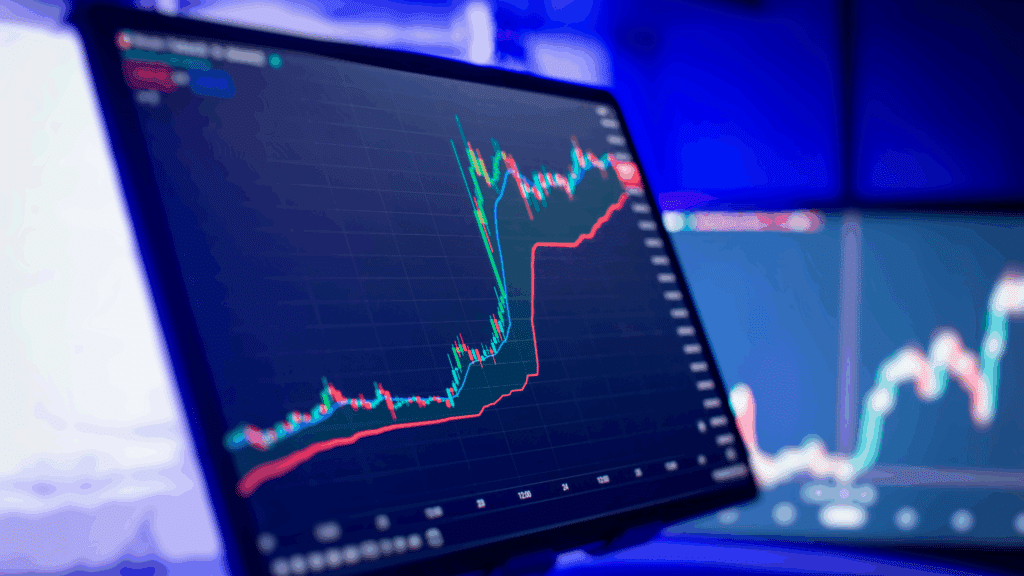If you followed the financial headlines in the second quarter of 2025, you likely experienced a sense of whiplash. April’s sharp sell-off, triggered by unexpected tariff announcements, had many investors bracing for a correction. Yet just weeks later, global equity markets rebounded—and by the end of June, both the S&P 500 and Nasdaq had notched new record highs.
So how did markets manage to rally in the face of so much uncertainty? The answer lies in a familiar but powerful pattern: markets tend to “climb the wall of worry.” Despite geopolitical risks, policy shifts, and unsettling news cycles, disciplined investors who stayed invested were rewarded.
At Aurelius Family Office, we believe in helping clients cut through the noise to focus on long-term fundamentals. Below is a high-level look at why markets surged in Q2 despite widespread concerns.
1. Market Fears Were Less Severe Than Expected
Much of the market panic in April was driven by the sudden announcement of President’s Trump’s aggressive new U.S. tariffs. Fears of a prolonged trade war with key global partners sent stocks tumbling. But in May, the White House reversed course, pausing many of the tariffs and reopening trade negotiations. According to J.P. Morgan Asset Management, this swift policy pivot restored market confidence and catalyzed the rebound.
Similarly, tensions in the Middle East between Israel and Iran sent energy markets into turmoil, but a late-June ceasefire agreement helped stabilize oil prices and global sentiment, according to the BlackRock Geopolitical Risk Dashboard.
In short, the feared worst-case scenarios didn’t materialize—which led to a relief rally across risk assets.
2. Corporate Earnings Outperformed Expectations
A major driver of the Q2 rally was a robust earnings season. According to CPA firm Moss Adams, 78% of S&P 500 companies reported earnings above analyst expectations, reassuring investors that corporate America remains resilient.
Technology “mega-cap” stocks led the way, with the Nasdaq returning 17.7% for the quarter. Strong profits and steady consumer demand helped offset worries about trade policies and geopolitical tensions.
3. Economic Fundamentals Remained Strong
Despite headline risks, the underlying economy showed surprising resilience. Inflation continued to moderate, the U.S. labor market remained stable, and consumer spending held up better than expected. As J.P. Morgan noted in its Q2 market review, these factors reduced the risk of a near-term recession, allowing investors to refocus on growth.
4. Volatility Created Buying Opportunities
Sharp pullbacks in April triggered bouts of panic selling—but history has shown that market volatility often creates opportunity. For patient investors, the dips provided attractive entry points into high-quality stocks and sectors.
As Seeking Alpha observed, markets often rise when news is “less bad than feared.” This psychological pattern repeated itself throughout Q2, rewarding those who stayed invested rather than trying to time the market. (see section below on volatility for more detail)
5. Sector Leadership and International Tailwinds Helped
In addition to U.S. tech leadership, international equities outperformed in Q2. A significant factor was weakness in the U.S. dollar, which made overseas assets more attractive. According to BlackRock, dollar declines typically support emerging market and international developed stocks, providing diversification benefits for globally minded investors.
Geopolitical and Financial Drivers Behind Q2’s Volatility
While markets ended Q2 at record highs, the ride was anything but smooth. Several events contributed to market swings throughout the quarter:
- Trade Policy Shocks: Early April saw an unexpected tariff announcement that spooked global investors. The initial sell-off brought the S&P 500 close to bear-market territory before tariffs were partially rolled back.
- Middle East Tensions: Rising threats between Israel and Iran pushed oil prices higher, but a temporary ceasefire helped calm the energy markets by quarter-end.
- Ukraine-Russia Conflict: Renewed military activity kept Europe on edge, though reports of potential ceasefire talks provided some relief.
- North Korea’s Provocations: Continued missile testing and support for Russia heightened Asia-Pacific risks.
- Defense Spending Shifts: NATO members agreed to boost defense spending to 5% of GDP by 2035, prompting rotation into defense-sector investments.
- European Elections: Political shifts in Poland and Romania introduced additional uncertainty, impacting currency and defense markets.
- Gold and Bitcoin Soared: Investors flocked to alternative assets, pushing gold past $3,400 per ounce and Bitcoin beyond $111,000, reflecting global risk hedging.
- U.S. Dollar Weakness: The dollar declined due to trade uncertainty and shifting capital flows, helping boost international equity returns.
- Strong U.S. Bank Earnings: Major banks reported better-than-expected profits, indicating robust corporate activity despite global tensions.
What This Means for Your Portfolio
At Aurelius Family Office, we believe the key takeaway from Q2 is not the headline volatility but the broader lesson: markets often reward long-term discipline over short-term reaction. Those who stayed invested through Q2’s turbulence benefited from market rebounds, sector rotation opportunities, and record-setting gains.
If you have questions about how these developments may affect your personal financial strategy, reach out to your team at Aurelius Family Office. We’re here to help you navigate market complexities to help support your long-term financial planning objectives.
Disclosures
Aurelius Family Office, LLC (“AFO”) is an SEC registered investment adviser. Registration with the SEC does not imply a certain level of skill or expertise. This communication is for informational purposes only, and is not intended to provide specific investment, legal, tax, or other professional advice. Investments involve risk of loss. Information regarding AFO’s services, fees, conflicts of interest and related matters can be found by clicking the following link https://adviserinfo.sec.gov/firm/summary/323016 and viewing the latest Form ADV, Part 2 Brochure and Part 3 Relationship Summary. Please visit us at https://aurelius.net/.


